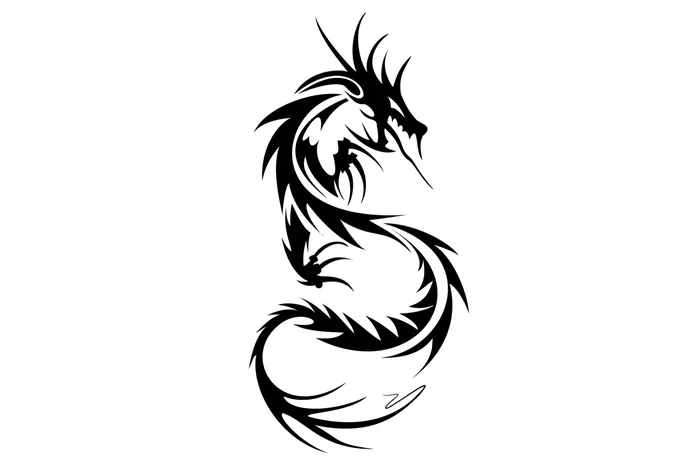Tattoos have long been a means of self-expression, serving as a canvas for personal beliefs, experiences, and aspirations. Among the myriad of tattoo motifs, lucky tattoos hold a special place, believed to bestow good fortune upon their bearers. Rooted in cultural folklore and ancient superstitions, lucky tattoos encapsulate symbols that have been cherished for centuries, promising an auspicious journey ahead.
Common Lucky Tattoo Symbols:
Lucky tattoos are adorned with a plethora of symbols, each carrying its own unique charm and auspicious aura. Among the most popular are:
Four-leaf clover: Symbolizing faith, hope, love, and luck, the four-leaf clover is a cherished emblem of good fortune, sought after by those in search of blessings.
Horseshoe: Widely recognized as a harbinger of good luck, the horseshoe holds particular significance when adorned with seven holes, believed to amplify its mystical powers.
Rabbit’s foot: Steeped in ancient folklore, the rabbit’s foot is revered for its ability to attract luck and ward off evil spirits, making it a coveted talisman among believers.
Acorn: Rooted in Norse mythology, the acorn is associated with prosperity and good fortune, symbolizing the potential for growth and abundance.
Ankh: As an ancient Egyptian symbol of life and luck, the ankh embodies the eternal cycle of existence, offering protection and blessings to those who bear it.
Elephant: Revered in various cultures, the elephant symbolizes health, longevity, love, wealth, and virtue, serving as a beacon of positive energy and prosperity.
Maneki-Neko (Fortune Cat): Originating from Japanese folklore, the Maneki-Neko, or Fortune Cat, is revered for its ability to beckon wealth and prosperity, making it a beloved motif among the fortunate seekers.
Numbers: Certain numbers hold auspicious connotations across diverse cultures, with figures like seven and thirteen being particularly esteemed for their association with luck and fortune.
Meanings and Cultural Context:
The allure of lucky tattoos transcends mere aesthetics, delving deep into the rich tapestry of cultural beliefs and superstitions. These symbols are steeped in tradition, with their origins intertwined with centuries-old customs and folklore.
The four-leaf clover, for instance, traces its roots back to Celtic mythology, where it was believed to offer protection against malevolent spirits and bring good luck to its possessor. Similarly, the horseshoe’s association with luck can be traced back to ancient Europe, where it was commonly affixed to doorways to ward off evil spirits and bestow blessings upon the household.
The rabbit’s foot, a cherished token in various cultures, finds its origins in African and Native American folklore, where it was revered for its mystical properties and believed to attract prosperity and ward off misfortune.
Across continents and civilizations, the acorn has been hailed as a symbol of potential and growth, embodying the promise of abundance and prosperity. In Norse mythology, the acorn was associated with Thor, the god of thunder, symbolizing strength and protection.
The ankh, an emblem of life and luck in ancient Egypt, was often depicted in the hands of deities and pharaohs, symbolizing the eternal cycle of existence and offering divine blessings to its bearer.
The elephant, revered in Hindu, Buddhist, and African traditions, symbolizes a myriad of virtues, including wisdom, strength, and prosperity. In Hinduism, the elephant-headed god Ganesh is worshipped as the remover of obstacles and the bringer of good fortune.
The Maneki-Neko, or Fortune Cat, is a beloved figure in Japanese folklore, believed to bring wealth and prosperity to its owner through its beckoning gesture. Adorned with a raised paw, the Maneki-Neko is a ubiquitous symbol of good fortune in Japanese culture.
Numbers, too, hold significant meaning across cultures, with certain digits believed to carry auspicious vibrations and attract good luck. In Chinese culture, the number eight is esteemed for its phonetic similarity to the word for wealth, while the number seven holds mystical significance in various religious and spiritual traditions.
Choosing the Right Design:
Selecting the perfect lucky tattoo is a deeply personal endeavor, guided by individual beliefs, experiences, and aspirations. While some may find resonance in traditional symbols like the four-leaf clover or horseshoe, others may seek out more esoteric motifs that hold personal significance.
When choosing a lucky tattoo, it’s essential to consider not only the symbolism behind the design but also its aesthetic appeal and personal relevance. Whether opting for a small and subtle emblem or a bold and intricate motif, the key lies in selecting a design that speaks to the soul and resonates with one’s deepest desires.
Placement and Aesthetics:
The placement of a lucky tattoo can play a significant role in enhancing its symbolism and aesthetic appeal. Popular locations include the wrist, ankle, back, and forearm, where the tattoo can serve as a constant reminder of the blessings it bestows.
When it comes to aesthetics, the possibilities are limitless, with lucky tattoos ranging from minimalist linework to vibrant, color-saturated designs. Whether opting for a classic black-and-gray motif or a vibrant, full-color illustration, the key lies in selecting a style that complements the chosen design and reflects the wearer’s personality.
In conclusion, lucky tattoos offer a unique opportunity to harness the power of ancient symbols and cultural beliefs, serving as talismans of good fortune and guardians of destiny. Whether adorned with a four-leaf clover, horseshoe, or sacred elephant, these timeless emblems carry with them the promise of blessings and prosperity, guiding their bearers on a journey towards a brighter, luckier future.

